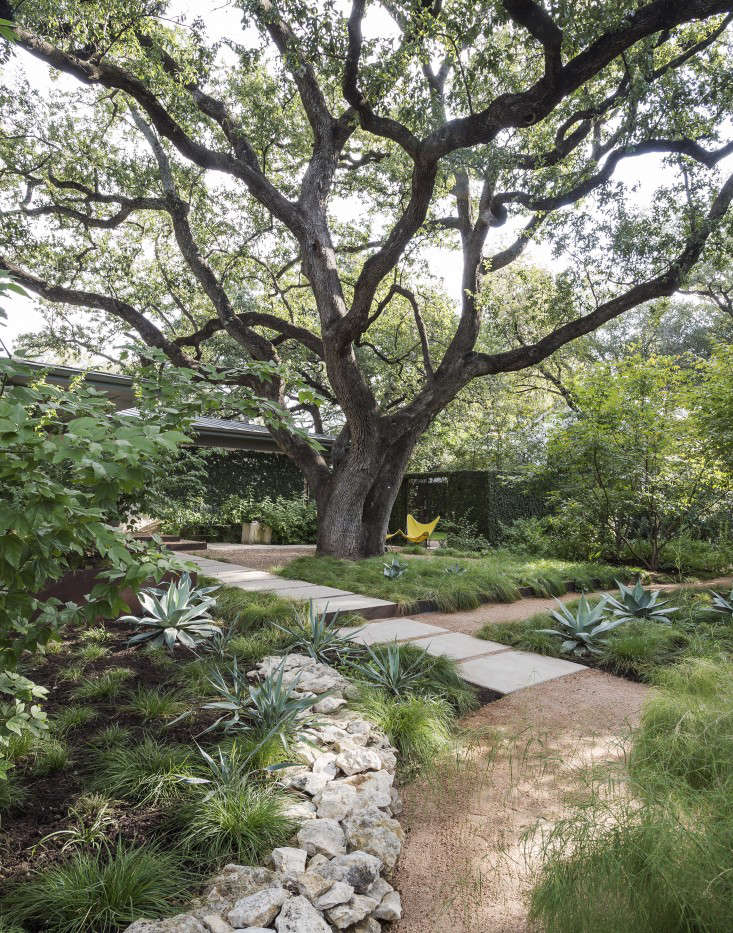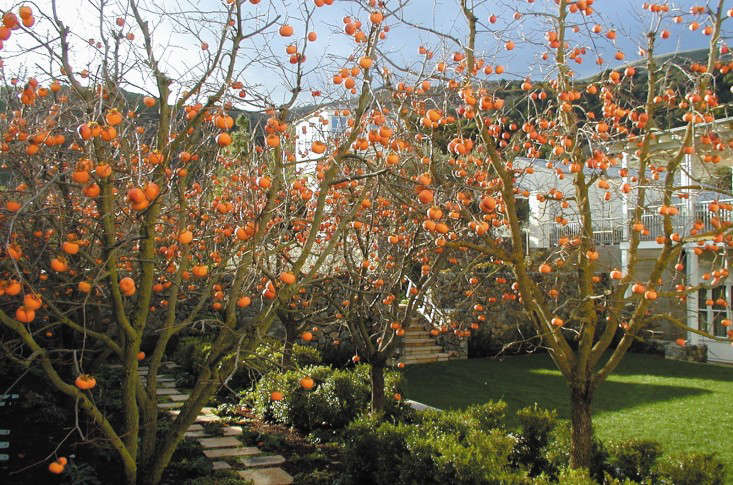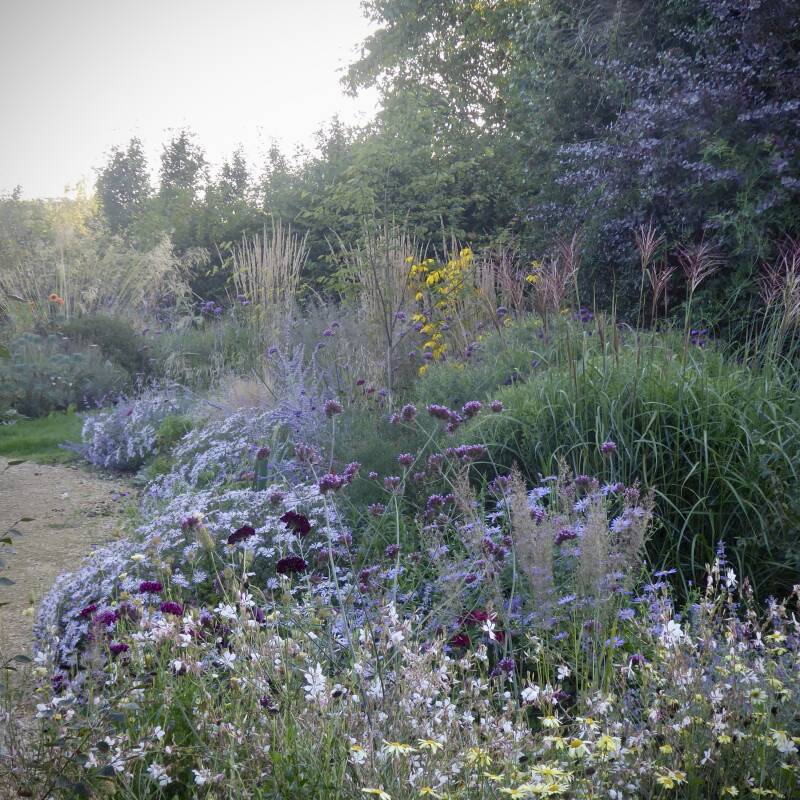Specimen trees have an undeniable appeal, whether they are gnarled, showy, squat, gigantic, rare, graceful, or just plain odd.
There’s a time when every garden owner considers these traits, mulling whether it’s worth it to add a specimen tree to a landscape. From the Latin specere (“to look”), specimen trees are designed to prompt garden visitors to stop and stare. They can be a big investment of time, effort, and money. Are they worth it?
Read on for everything you need to know about specimen trees:
What Is a Specimen Tree?

Generally, any tree planted singularly as a focus of attention is considered a specimen tree. It could be noteworthy because of its size, species, flower, bark, form, or rarity. It could simply be a common but well-placed tree with beautiful branching. Or perhaps it’s a tree that’s unexpected.
Often, particularly in larger landscapes, specimen trees are sizable and noteworthy, sometimes standing alone and other times planted in groups to create and shape an outdoor space.
Are All Specimen Trees Big?

Not all specimen trees are grand in size. A specimen tree can also be a unique tree, with perhaps an interesting trunk or lots of character. Topiaries are among the most flamboyant of specimen trees.

Giant, dwarf, rare or common, specimen trees have been a passion of collectors throughout history. “There has been a vigorous trade in specimen trees since we have historical records,” says Kathryn Gleason of Cornell’s Department of Landscape Architecture and specialist on the archaeology of past landscapes. She explains: Queen Hatshepsut in the 1500s B.C.E. brought frankincense trees back from the land of Punt. Roman generals populated Rome’s vast gardens and public parks with trees from their travels. Conservatories in England were developed to show specimens of palm trees from British colonies and trade, most famously at Kew Gardens outside of London. The British also displayed specimens from North America collected and sold via catalog through John Bartram, whose gardens you can still visit in Philadelphia today. In turn, European-Americans brought over familiar trees for both production and ornament as specimens.
How Does a Specimen Tree Impact a Landscape?

Well-sited and smartly selected specimen trees seemingly can do it all. They can add intimacy, age, or personality to a landscape. They can shape a larger space or subtly offer a focal point to a smaller planting area. They can do double duty by providing shade, screening, or separation to a design scheme as well. Above: Olives encircle an outdoor dining area, creating another layer of intimacy in the space.
A large tree can bring instant gratification and make a garden feel as if it has always been there. “They give the garden structure that you would otherwise have to wait a bit for,” explains Ten Eyck of Ten Eyck Landscape Architects.

Large specimen plants grouped together are often used to create and shape larger landscapes in a naturalistic grove effect or in architectural arrangements like a bosque or allee, says Scott Lewis of Scott Lewis Landscape Architecture. “For this purpose, the trees are usually ‘matched’ specimens and tend to be larger sizes for a more instant effect.” Above: An persimmon allee adds drama to this walkway designed by SLLA.

Planting a smaller scale specimen, on the other hand, can add intimacy to a space. “One thing you’re doing is giving an immediate sense of enclosure,” explains Susan Welti of Foras Studio in Brooklyn. “We have huge trees in the urban landscape and dotted around our brownstones. What we do when we place a specimen tree is create something that’s more human scale. You put an understory tree in and you feel more human, protected and private. And this is important in urban gardens.”
Specimen trees can also add personality, whimsy, or surprise to a garden depending on the species and placement. They can reflect other locales and offer a reminder of past experiences.
A Deeper Dig: Topiary

Jake Hobson, a U.K.-based a topiary expert and cloud-pruning specialist, says topiaries can give a sense of structure, form, and permanence that other plants can’t. They can impose grandeur and formality on a garden or can add points of contrast to more relaxed plantings. “Different shapes have different impacts—flat-sided, rounded, organic, tall and thin, squat, you name it,” Hobson explains. “It all depends on the space and effect you want to create.”
Topiary pruning schedules depend on the species and climate but pruning is required at least once a year. “Leave a topiary for two years and it becomes a very expensive bush,” he says. Ideally, using hand shears is much better than a mechanical hedge trimmer. Regardless of when he prunes, Hobson tries to give his topiaries a “tidy-up clip” at the end of summer so they look good over the winter.
For more on cloud pruning, organic topiary, and pruning workshops and demos, visit Jake Hobson. Hobson is also the owner of Niwaki, a UK-based purveyor of high-quality Japanese garden tools.
How Do I Choose?

It’s an extremely site-specific question, but Welti says clients should ask themselves what they want the tree to do and then set priorities. “What type of vibe are you after?” she asks. “Are you looking for something that looks like it’s been there forever? Do you want something that will pop from the background or do you want an extremely subtle look?”
For established gardens, consider if it incorporates well into the existing landscape. Then weigh attributes such as scent, fruit, fall color, bark, form and flowering as well. The architecture of the house, the larger surrounds and the history of nearby buildings also offer cues in selecting an appropriate specimen, says Welti. “Does it look meant for a space?”

Usage considerations also come into play. Does the specimen need to supply shade, separation or screening? Also consider size from an aesthetic point of view. If purchasing a smaller specimen, do you have a sense of what it will grow into down the road and how it will scale with your landscape’s other components?
If you choose a younger specimen, make sure you give it enough room to grow to maturity. It you want to fill the area while it develops, consider using plants that are easily trimmed or removed so the specimen always has room to grow.
Welti emphasizes that a specimen really should look good all year round, even if it loses its leaves. Deciduous trees can offer dramatic interest throughout the year, with nice bark, pods or interesting branching habits.

Will It Thrive?
Horticultural appropriateness is vital to specimen tree selection, if only for the time, labor, and cost involved in the process. Among the considerations are:
- Soil, light, weather, and wind conditions?
- What is its growth rate and how big will it eventually be?
- What form will it take through the years?
- How long will it live?
- Is it hardy and easy to care for or finicky and disease-prone?
- Is it best to purchase it container-grown or balled-and-burlapped?
- What acclimation process is best for this species?
- What are its post-planting needs, particularly its watering demands?
Because horticultural concerns can be complex, it’s wise to hire a professional. “We are good at growing trees but architects and designers are good at choosing the best tree for specific situations,” says Charles Thomas of Berylwood Tree Farm, which sells mature, distinctive field-grown trees. “Always hire a good contractor. Specimen trees are big, heavy and expensive.” At minimum, do lots of research.

Lewis and Welti suggest hiring an arborist. Welti employs Urban Arborists in Brooklyn for her tree selection and installation. “More and more when we’re trying to find something as big as we can go, we have them source it. They have a great network and will find the biggest version of the species that looks great and is well formed and cared for. They’ll procure, deliver, install and guarantee.”
Lewis says, if possible, take along to the nursery a consulting arborist, whose job it is to provide evaluations and recommendations for trees. At the nursery, he says, look at the overall form of the tree. Are there flat sides or holes in the canopy? Does the leaf canopy look vigorous, not shriveled and dry? He also suggests taking along a garden trowel to check the tree roots. They should be rooted to the sides of their container without coming out the bottom. If the tree has girdling roots—roots circling the trunk—visible at the surface, move on.
Which Trees Are Worth the Investment?
Welti and Ten Eyck suggest investing in trees that are long-lived. Welti says species such as ornamental cherries, for example, are beautiful but their short lives make them poor investments. She advises steering away from any disease-prone varieties and encourages native species.
Your age could be a factor in whether to splurge on a larger specimen. “If you are 70 and don’t want to wait for a tree to grow, then it’s worth it,” says Ten Eyck. “If you are young, start small. Young trees are more adaptable and easier to grow. Many times they will surpass a specimen in size after a couple of years.”
Ancient Olive Trees in Northern California buys old olive orchards, some still in production, and sells trees that are 25 to 130 years old, ranging from $1,750 to $5,000. Some of Berylwood Tree Farm’s largest specimens are more than 50 years old and can sell for $25,000-$35,000, not including shipping and installation. Generally, the most expensive trees are large, slow growers, such oaks, olives and sycamores. Other popular and expensive species that Berylwood sells include Southern magnolia, Ginko biloba, podocarpus gracilior and ficus.
If you find yourself shopping for a home, it pays to look closely at the landscape’s mature trees. Often sellers don’t appreciate the value of their specimens. Take an arborist along, especially if you are drawn to a property because of a notable, large-scale tree.

“When purchasing a specimen tree, you’re basically purchasing time,” explains Berylwood’s Thomas. “If the tree is full grown, you are purchasing the time it took for it to grow. If the tree has an interesting form or character, it probably has been hand pruned over the course of many years. Then you are purchasing a living work of art that took many years to create.”
Hobson agrees. “Prices vary tremendously,” he says. “But remember that most topiary takes, at the very least, 5 years to develop, and often 10 or more – not just of time, but skill and care also – so the cost will reflect that.”
Where to Start and How to Finish
Planting a specimen tree can be as much about the journey as the destination.
Because specimen trees are at the heart of the botanical garden, that’s an enjoyable first stop for inspiration on what grows well in your area. Specialty growers and well-curated nurseries are great resources for ideas. Online sources abound. Though photos are helpful for a general idea of the tree, it’s important to see the species in person and ideal to handpick the specimen for your site.
When exploring, Welti encourages people to expand their thinking beyond go-to trees like birch, redbud, and Japanese maple. Then, if they come back to the familiar, it’s fine. They come back with an educated eye.
After you’ve chosen your specimen, don’t forget to take extra care and effort in soil preparation, watering and drainage. With large specimens, says Hobson, people often don’t consider them as trees that need tending to, as they would smaller plants. They’ll need good soil preparation and watering. Aaron Mount from Ancient Olive Trees says clients may not realize that a recently transplanted old olive needs about 100 gallons of water a week initially to keep its canopy green and to get its root system established.
In the end, for Thomas it’s about emotion. “Choose a tree that speaks to you and you feel a connection with,” he says. “It’s a long-term commitment.”
N.B.: For more specimen trees, see Required Reading: New York City of Trees and Architects’ Roundup: 10 Landscapes Designed Around a Single Tree. And for more tips on landscape design with trees, see ouf Garden Design 101 guides:
- Trees: A Field Guide to Planting, Care, and Design.
- Birch Trees 101: A Field Guide to Planting, Care, and Design.
- Japanese Maples: 5 Favorite Trees to Grow.
- For a magnificent landscape defined by its specimen trees, see A Family Affair: Lady Llanover’s Legacy in South Wales.








Have a Question or Comment About This Post?
Join the conversation